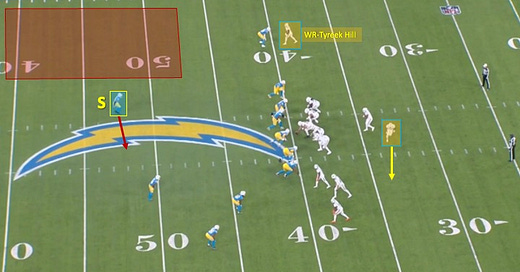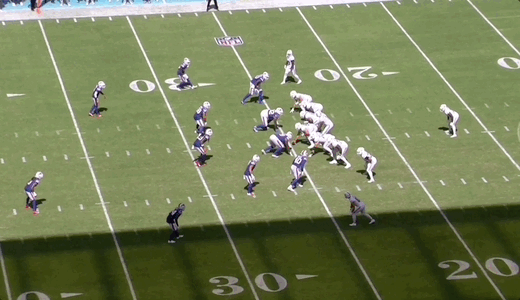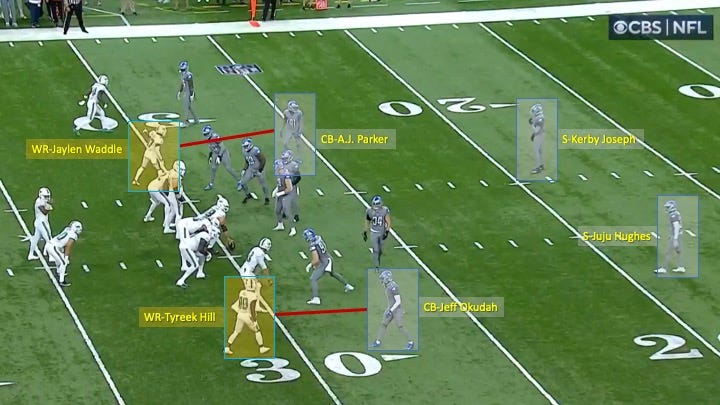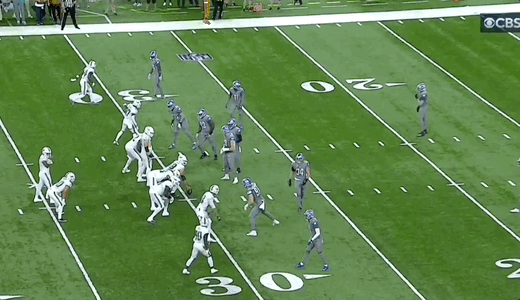The Dolphins used more motion than any team in the NFL last season according to ESPN Stats & Info. This wasn’t by accident. It’s a part of Mike McDaniel’s DNA given his time working with Kyle Shanahan. Yet it also fits the Dolphins’ personnel perfectly.
So what purpose does motion serve? For the Dolphins, it’s a regular part of their offense, which means there isn’t just one reason they lean on it so heavily. In today’s breakdown, I’ll cover how McDaniel uses it to take advantage of the strengths of his key offensive players.
The Impact on Tua
The first reason for (or benefit of) using so much motion has to do with Miami’s quarterback. Tua Tagovailoa has certain strengths and weaknesses. He doesn’t have a strong arm, so he relies on his timing, rhythm, and anticipation, which happen to be among the best of any quarterback in the NFL.
This means the cleaner the defensive picture is and the less disruption there is at the line, the more likely he is to have success. Motion helps make that happen.
You can see a couple of examples below. Watch Tyreek Hill motion across the formation on both plays and then get a running start before the snap. The motion ensured a free release and a complete lack of disruption. Tua was able to get the ball out on time and before Hill had turned his head around on both throws as a result:
It doesn’t matter if it’s zone, man, or some kind of match concept, it’s nearly impossible to jam or re-route any receiver at the line off of motion, let alone someone with the speed of Hill. This kind of motion opens up the ability to both attack downfield or create cushion on intermediate throws.
Freeing Up Hill and Waddle
If defenses could, they’d double Hill and Jaylen Waddle on just about every play and take their chances with the rest of the offense. McDaniel’s mission is, therefore, to make it difficult for defenses to do this easily. Motion is one of the key ways he prevents those doubles.
It takes coordination for defenders to double-team receivers, whether that means a true double-team or the use of other coverages where defenders are playing to their help. Motion can completely disrupt a defense’s ability to effectively double since it forces communication on the fly and often right before the snap. Sometimes that leads to confusion or a failure by the defense to get everyone on the same page. Sometimes that leads to formations where the defense ends up with its hands tied.
This 3rd-and-6 against the Lions was a great example. Miami started in a 2x2 formation with Tyreek Hill to the right and Jaylen Waddle to the left. It looked like the Lions were matching up in man coverage with two deep safeties providing help over the top to both Hill and Waddle’s defenders:
Hill then motioned across the formation and his defender, Jeff Okudah, followed. You can see that Okudah didn’t just keep his eyes on Hill the entire time. He was also communicating and signaling with safety Kerby Joseph to the other side of the field:
That was a good indicator that Okudah was not locking onto Hill in pure man. Instead, he would likely be playing to some kind of help. Here, it meant that safety Kerby Joseph would now double Hill instead of helping out on Waddle:







